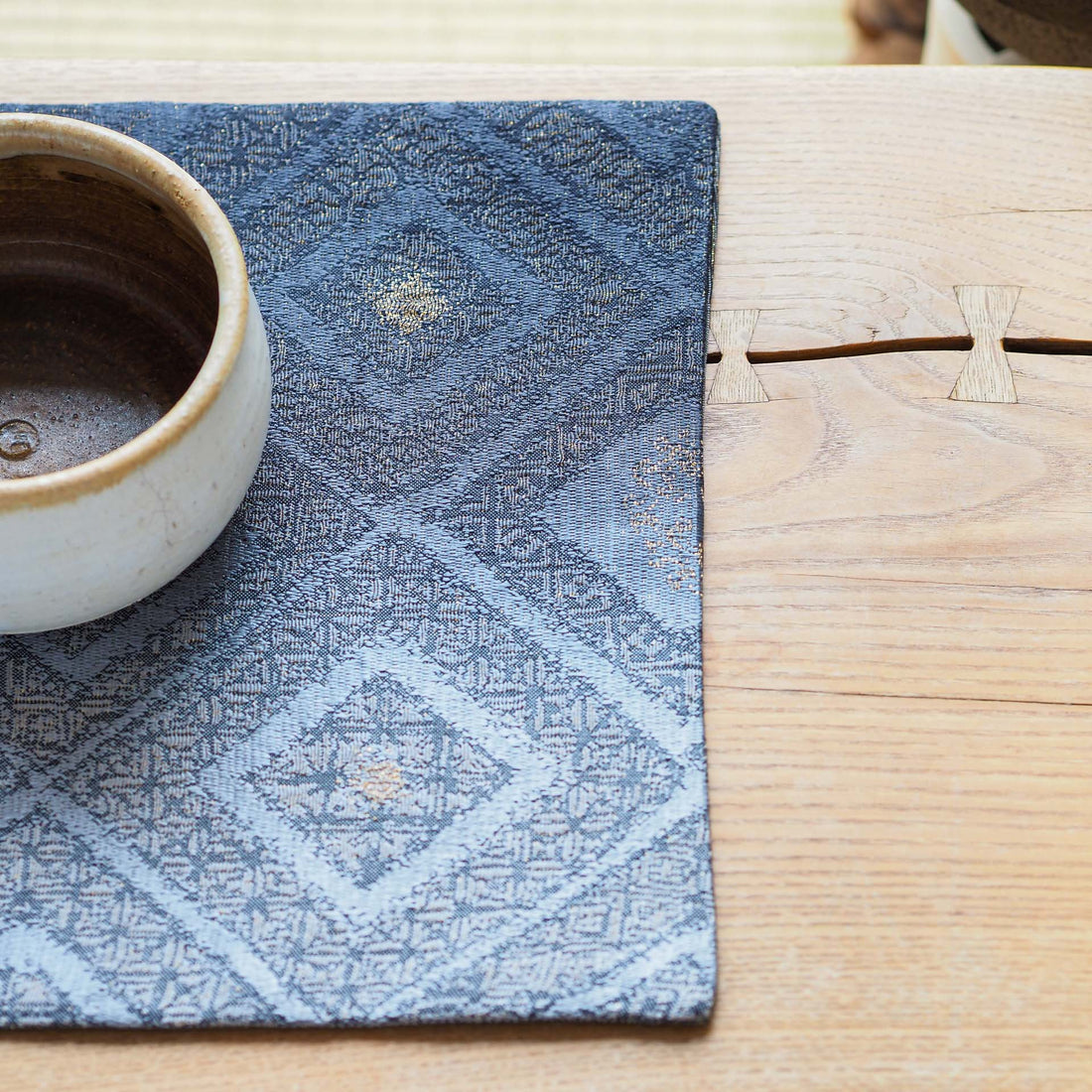
Upcycling Kimono and Obi
Such a phrase describes the plight of Japan’s beautiful kimono and obi. The interest in wearing kimono fades in modern Japan, so the obi follows the same fate. They are stored in the dark drawers of old wooden tansu, waiting to be handed down to a daughter or granddaughter, but sadly for some, that day may never come.
It’s this sense of mottainai that inspired us to explore ways to breathe new life into these wearable works of art. They took months to create and now they are hidden from the world. They deserve to be seen and appreciated.
Our first idea was to repurpose them for the tea ceremony, transforming the fabrics into chabu and table runners that add a touch of elegance and festivity to tea tables. This way, the beauty of the kimono and obi can once again be part of a ritual, bringing joy and a sense of occasion to those tea moments.
We also want these stunning textiles being carried out into the world in new forms—bags for teaware, perfect for transporting your favorite tea set to a gathering, or stylish tote bags for exploring the city and shopping. By giving kimono and obi this new purpose, we allow their beauty to shine in everyday life, reminding us of the traditions they represent while adapting them to modern needs.
This approach not only honors the spirit of mottainai but also helps to preserve the cultural heritage. By repurposing these textiles, we create a bridge between the past and the present, ensuring that the artistry and history of kimono and obi continue to be appreciated by future generations.
In a world that often prioritizes the new and disposable, there’s something deeply fulfilling about finding new ways to cherish the old and irreplaceable. It’s a way of showing respect for the time, effort, and skill that went into creating these works of art, and of bringing their beauty back into the light where it belongs.
